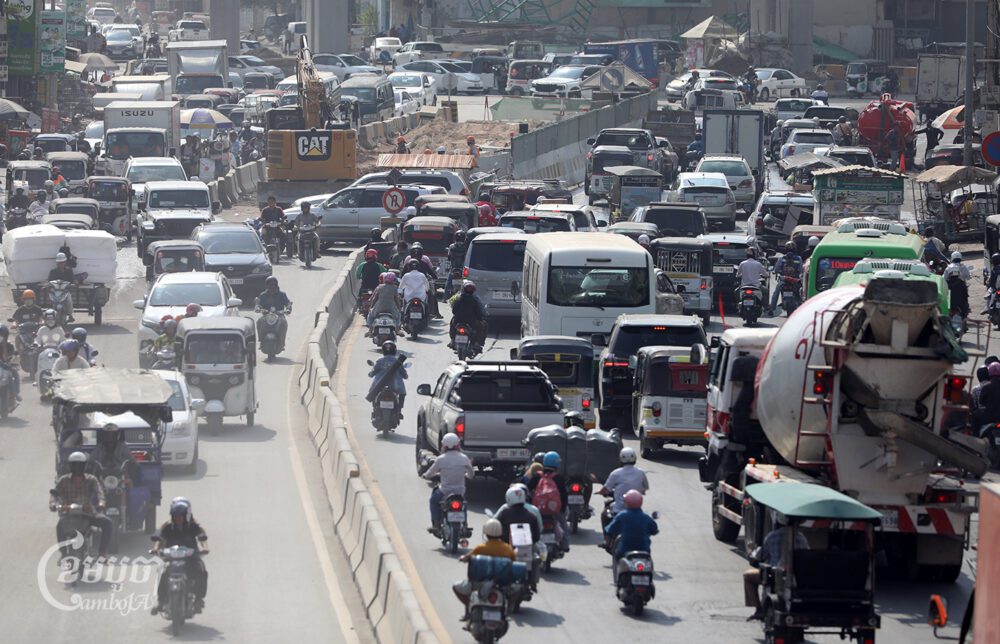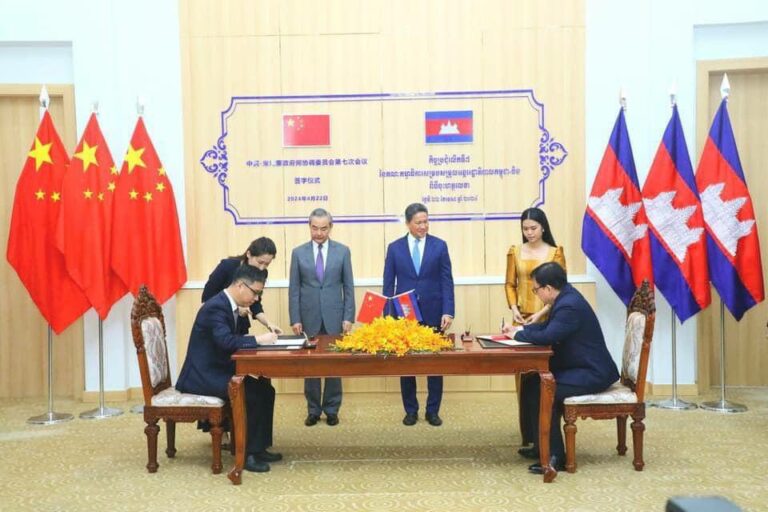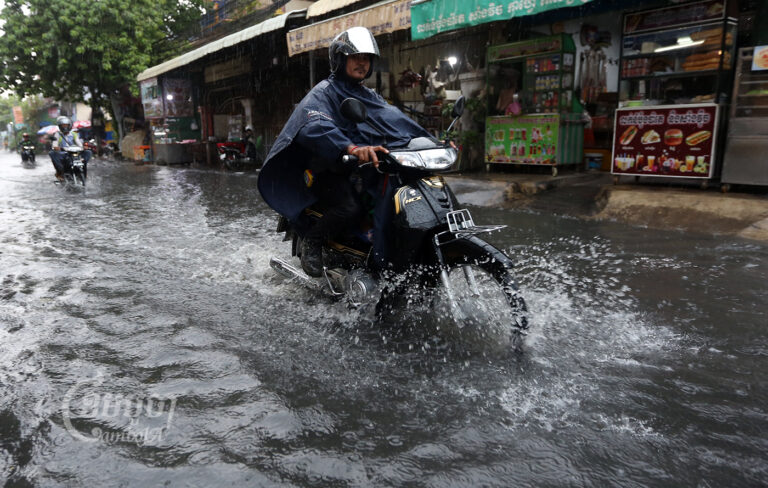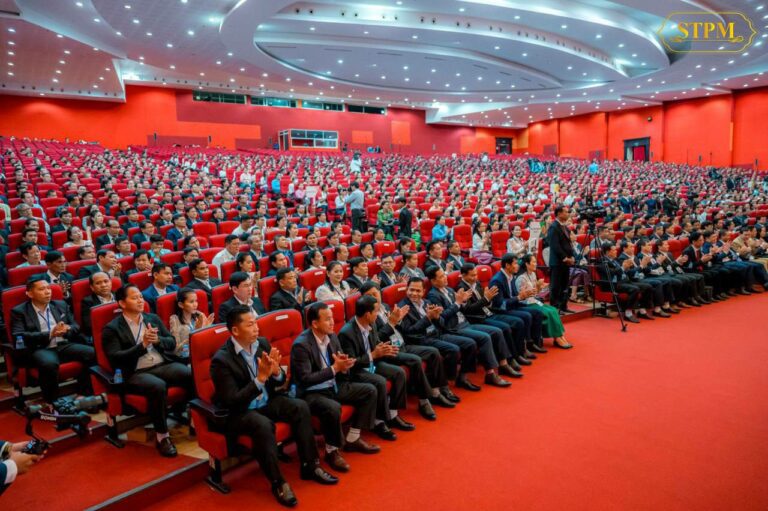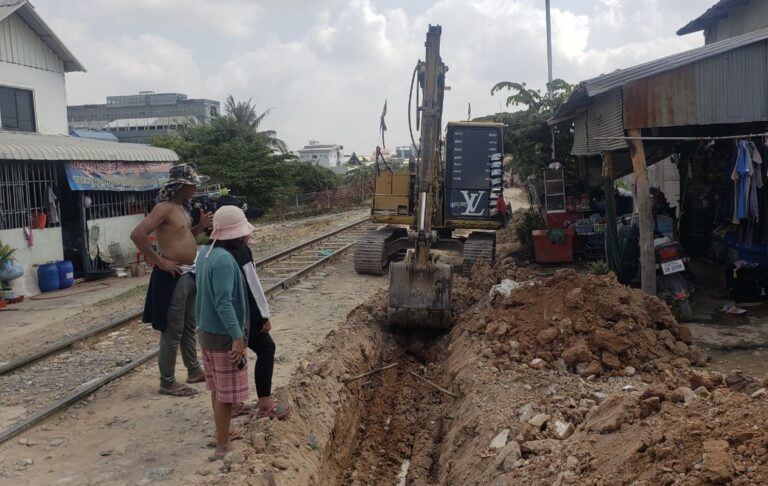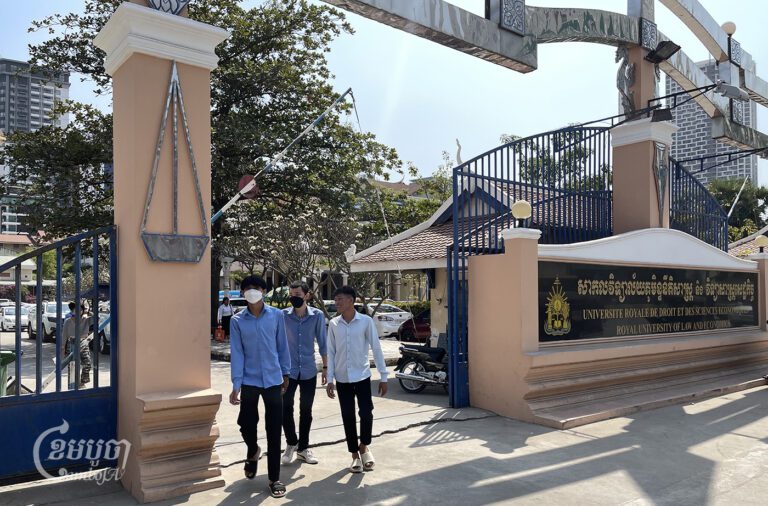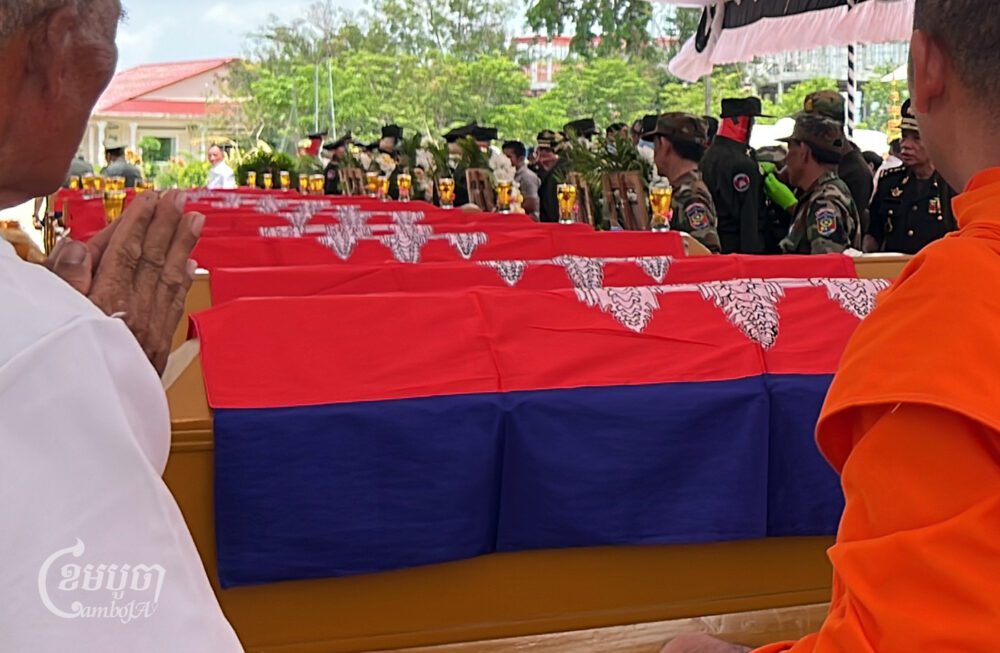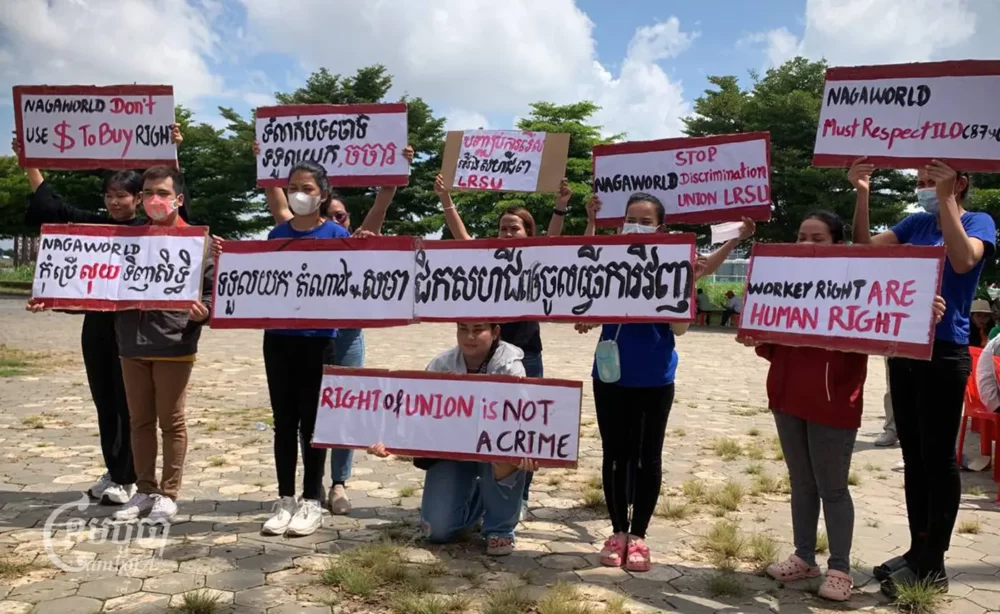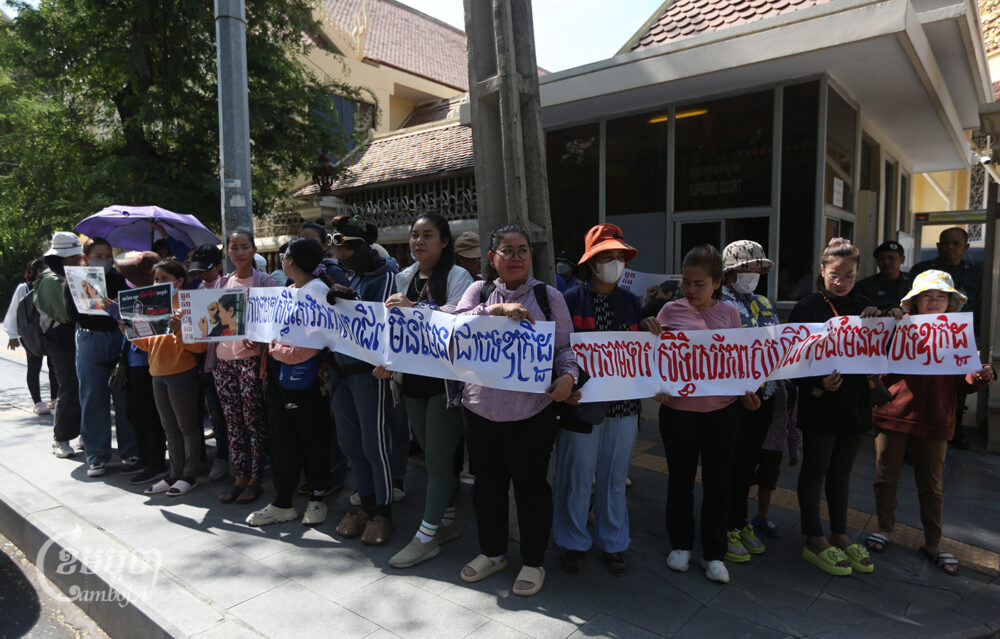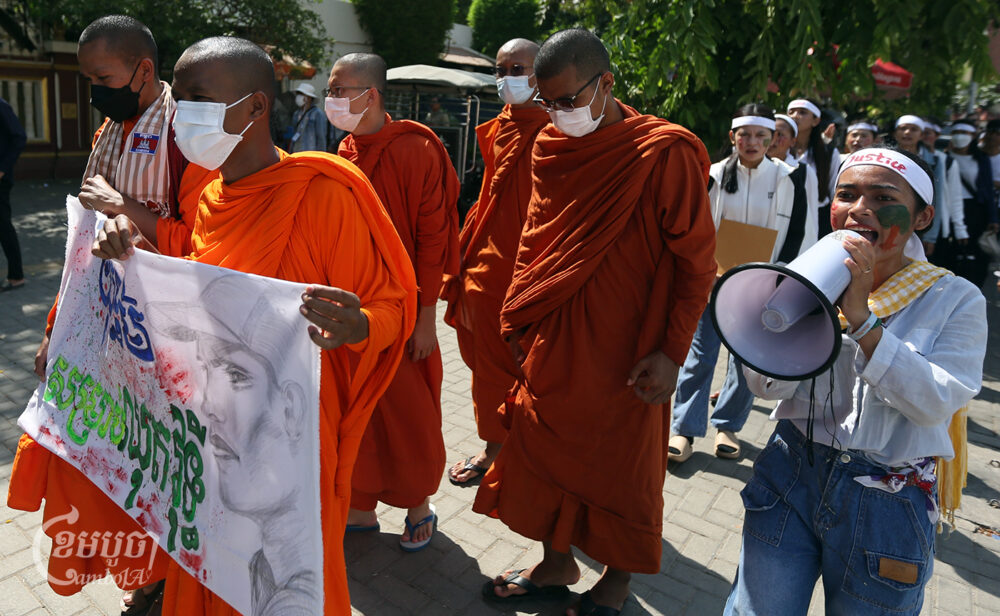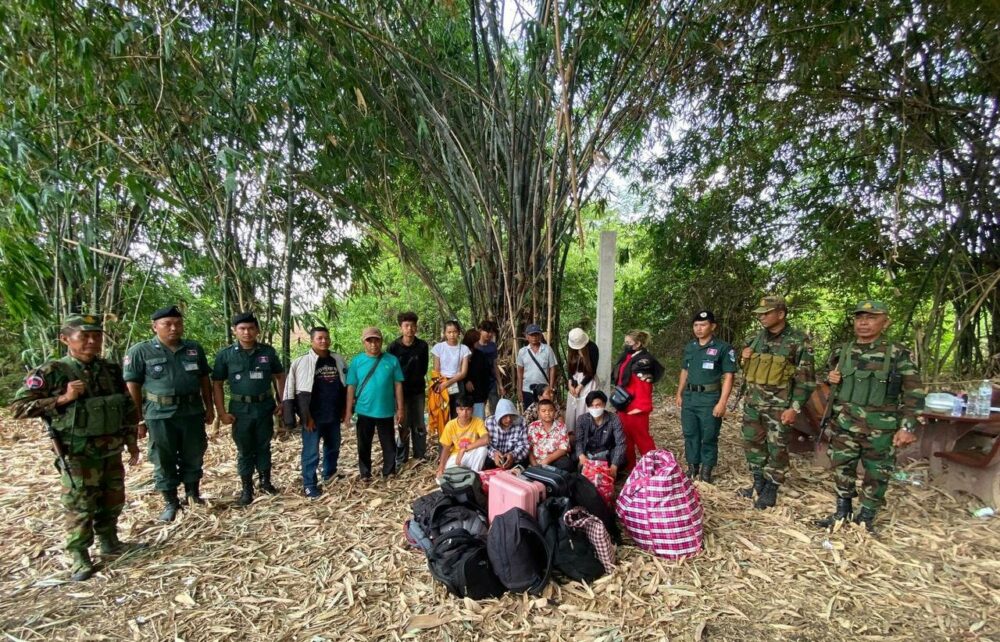The Bassac River bridge development would reduce traffic congestion and boost economic growth, alongside additional roads and bridges that will be built in Phnom Penh in the future, Prime Minister Hun Manet said at the groundbreaking ceremony of the Bassac bridge on Monday.
Road building is the second most important priority after human development, he shared, noting that the word “road” refers to developments such as bridges, railway, expressway.
When he went to China in October 2023 and France in January 2024, he spoke to investors to consider conducting studies on the prospect of a subway in Phnom Penh.
“We need to consider the traffic issues,” he said. “Our roads can no longer be extended, especially in [Phnom Penh] city. So, we have to first study how to increase the capacity of our public transportation. Secondly, we need to think about building ring roads to avoid traffic. Thirdly, a sky train and subway.”
“Roads facilitated traffic, reduced traffic congestion and created opportunities for people to do business. They are a vascular path to nourish the organs of national development, and improve people’s living standards and wellbeing,” he remarked.
In addition, Cambodia has built many flyovers to reduce congestion.
Cambodia has been negotiating with Vietnam on connecting the Phnom Penh-Bavet expressway to Ho Chi Minh. Negotiations on the Phnom Penh expressway to Poipet are being prepared as well as an examination over the strengthening of the railway system. The government is also studying the possibility of connecting the railway track from the new airport in Kandal to Phnom Penh city.
“I would like to, through the Chinese ambassador to Cambodia, encourage Chinese investors to continue to trust the government and invest in other major infrastructure projects in Cambodia, such as expressways, canals, sky train and subways,” Hun Manet said.
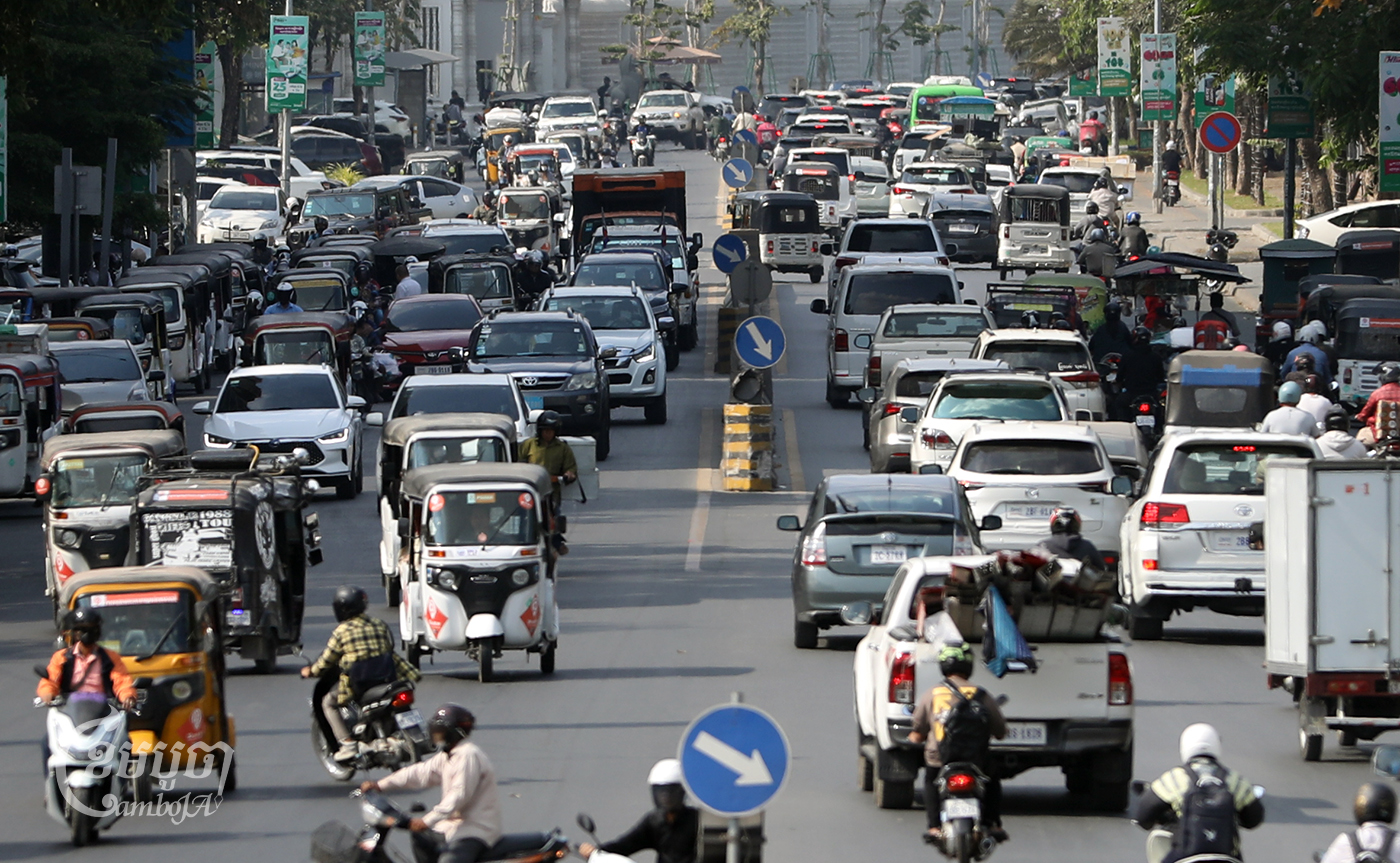
At the event, Public Works and Transport Minister Peng Ponea said China has always contributed and supported Cambodia’s socio-economic development in both bilateral and multilateral frameworks, especially infrastructure projects.
“This project [Bassac bridge] is an important and strategic project as it connects relationships, people, businesses and investments through the facilitation of travel and transportation. In particular, it can reduce traffic congestion,” he added.
Ministry spokesperson Phan Rim did not respond to questions.
Chinese Ambassador Wang Wentian said China and Cambodia are “steel friends”, and that this is the first year for the building of the “Cambodia-China Community of Common Destiny”, and people-to-people exchanges.
On China’s part, they will continue to increase investment in infrastructure and build a “bridge of friendship” for the next generation, Wentian assured.
Future Forum junior research fellow Ses Aronsakda said the transformation of public transportation in Phnom Penh is necessary, although he opined that it was too early to invest in the train as some basic issues have not yet been fixed.
“We need to fix basic issues, mainly walkability first. The bus rapid transit system is a more appropriate solution for Phnom Penh,” he added.
To solve traffic congestion, the government should focus on moving people, not cars, he mentioned in an opinion piece in 2022. A strategy focused on expanding traffic by cars alone would fail due to the space and budgetary inefficiencies of car-centric infrastructure.
“It should be remembered that the purpose of transportation planning is to move people, so let’s not conflate cars with people,” he wrote, noting that it is obvious that a car-oriented solution is “bound to fail”. Hence, a new approach which focuses on moving people is needed instead.
Local planners can improve transportation capacity by reducing car lanes and replacing them with dedicated bus lanes. This can be done quickly and cheaply by repainting car lanes, using bollards and barriers, and upgrading bus stops to sheltered stops with additional seating, Aronsakda said.
He asserted that it is possible for Phnom Penh to “reverse its worsening congestion”, but achieving this would require city planners to reverse the city’s reliance on private vehicles.
“City planners must heed the well-studied negative cost and ineffectiveness of pursuing a car-centric approach to urban transportation. Only by prioritizing more efficient forms of commutes can congestion be reduced,” he added.
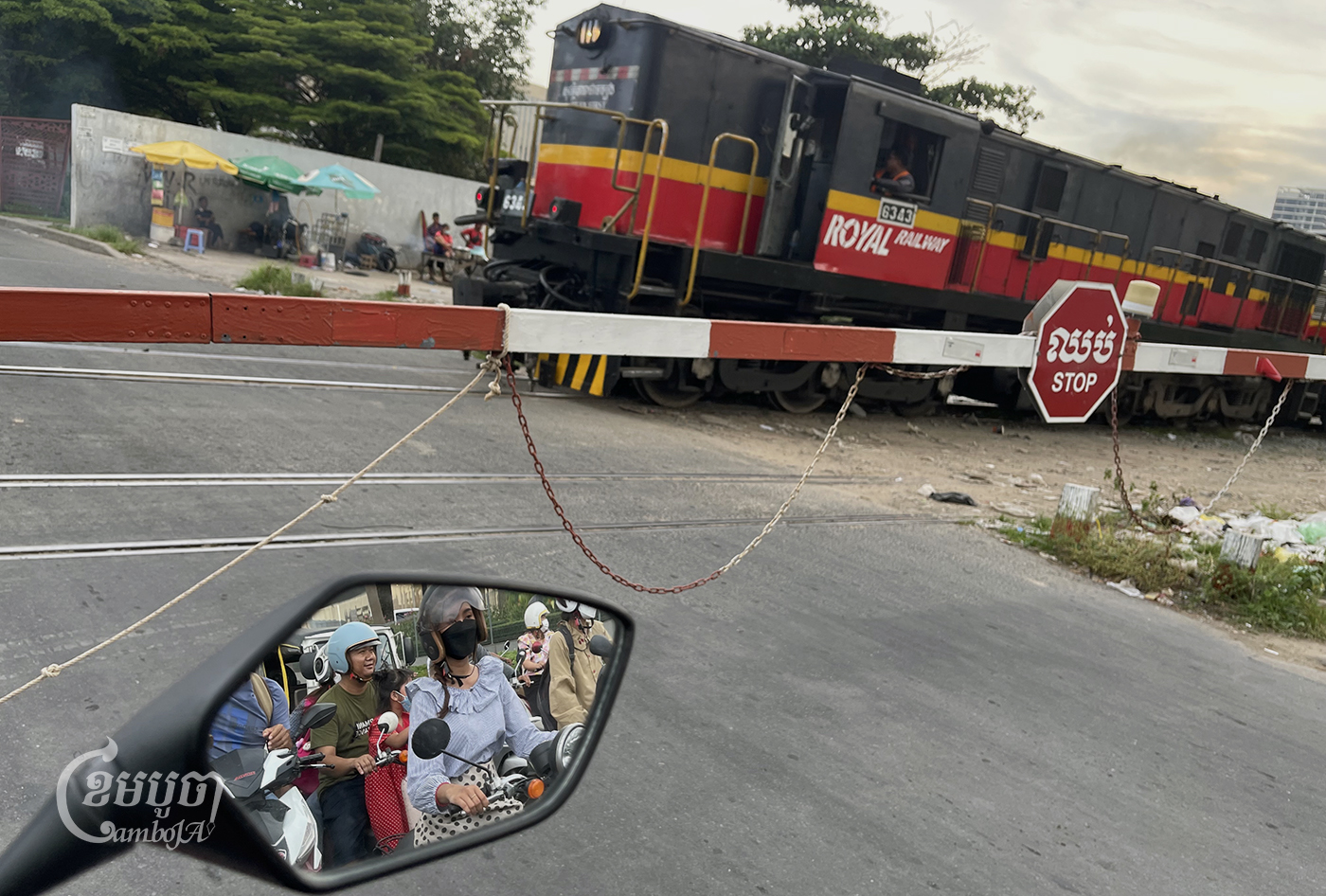
According to another research fellow at Future Forum, Sambath Chhum, Phnom Penh’s public bus system is facing a traffic problem due to an 11.3% increase in registered vehicles in the last five years.
In his op-ed, Sambath said, public transit, including buses, has the “potential to help alleviate congestion but has not significantly contributed to traffic relief”.
He stated that the increase of transportation has not included much investment in public transit, rather traffic alleviation strategies have focused on major infrastructure projects that increase road surface area, such as overpass construction.
But, adding more roads is “not a viable solution” to congestion in the long run due to induced demand.
These changes are going to fail without everyone in the community, including policymakers, working together. For example, commuters cannot be convinced to give up their vehicles if the bus service fails to meet their travel demands.
“The bus system cannot successfully replace motorcycles and cars unless concrete reforms are implemented to favor buses or establish bus-only lanes,” Sambath said.


